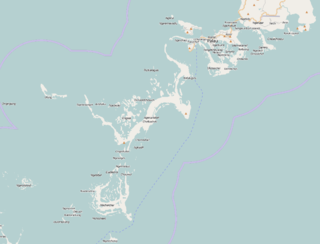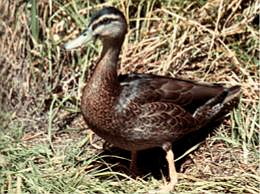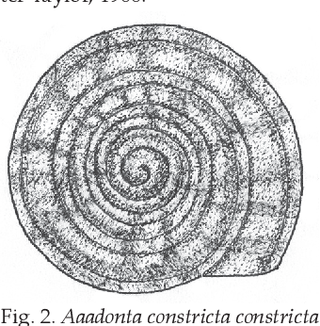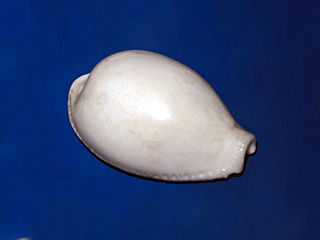
Palau, officially the Republic of Palau, is an island country in the Micronesia subregion of Oceania in the western Pacific. The republic consists of approximately 340 islands and connects the western chain of the Caroline Islands with parts of the Federated States of Micronesia. It has a total area of 466 square kilometers (180 sq mi), making it one of the smallest countries in the world. The most populous island is Koror, home to the country's most populous city of the same name. The capital Ngerulmud is located on the largest island of Babeldaob, in Melekeok State. Palau shares maritime boundaries with international waters to the north, the Federated States of Micronesia to the east, Indonesia to the south, and the Philippines to the northwest.

The Republic of Palau consists of eight principal islands and more than 250 smaller ones lying roughly 500 miles southeast of the Philippines, in Oceania. The islands of Palau constitute the westernmost part of the Caroline Islands chain. The country includes the World War II battleground of Peleliu and world-famous rock islands. The total land area is 459 km2 (177 sq mi). It has the 42nd largest Exclusive Economic Zone of 603,978 km2 (233,197 sq mi).

Conchology is the study of mollusc shells. Conchology is one aspect of malacology, the study of molluscs; however, malacology is the study of molluscs as whole organisms, whereas conchology is confined to the study of their shells. It includes the study of land and freshwater mollusc shells as well as seashells and extends to the study of a gastropod's operculum.

The Mariana mallard or Oustalet's duck is an extinct species of duck of the genus Anas that was endemic to the Mariana Islands. Its taxonomic status is debated, and it has variously been treated as a full species, a subspecies of the mallard or of the Pacific black duck, or sometimes as a subspecies of the Indian spot-billed duck.

The Special Type 2 Launch Ka-Mi was the first amphibious tank of the Imperial Japanese Navy (IJN). The Type 2 Ka-Mi was based on the Imperial Japanese Army's Type 95 Ha-Go light tank with major modifications. It first saw combat service during the Guadalcanal campaign in late 1942.
Aaadonta angaurana is a small air-breathing land snail, a terrestrial pulmonate gastropod mollusc in the family Endodontidae.

Aaadonta is a genus of air-breathing land snails, terrestrial pulmonate gastropod mollusks in the family Endodontidae. Specimens from this genus are endemic to Palau.

Aaadonta constricta is a species of land snail, a terrestrial pulmonate gastropod mollusk in the family Endodontidae. It is endemic to Palau, where it is known from the islands of Babeldaob, Ngemelis, Peleliu and Koror. It may be extirpated from Koror. It is threatened by habitat destruction and modification.

Aaadonta fuscozonata is a species of air-breathing land snail, a terrestrial pulmonate gastropod mollusc in the family Endodontidae. This species is endemic to Palau, where it is known from Koror and Peleliu, and the small islands of Ngemelis and the northern Rock Islands. This snail inhabits tropical moist lowland forest, and is threatened by the destruction and modification of its habitat.
Aaadonta irregularis is a species of snail, a terrestrial pulmonate gastropod mollusk in the family Endodontidae. It is endemic to Palau, where it was only known from Peleliu, but has only been found recently on the very small island of Omekang. It is threatened by the destruction and modification of its tropical moist lowland forest habitat.
Aaadonta kinlochi is a species of snail, a terrestrial pulmonate gastropod mollusk in the family Endodontidae. It is endemic to Palau, where it was known from Angaur and Ulong Island. If it is still extant, it is threatened by the destruction and modification of its tropical moist lowland forest habitat.
Aaadonta pelewana is a species of snail, a terrestrial pulmonate gastropod mollusk in the family Endodontidae. It is found in Palau, where it was known from Peleliu and Koror. If it is still extant, it is threatened by the destruction and modification of its tropical moist lowland forest habitat.
Zyzzyxdonta alata is a species of air-breathing land snail, a terrestrial pulmonate gastropod mollusk in the family Endodontidae.

The Belau National Museum (BNM), previously Palau Museum, is a museum in Koror, Palau. It is the oldest continuously run museum in Micronesia.

Acochlidiacea, common name acochlidians, are a taxonomic clade of very unusual sea snails and sea and freshwater slugs, aquatic gastropod mollusks within the large clade Heterobranchia. Acochlidia is a variant spelling.

Acochlidiidae are a taxonomic family of shell-less freshwater gastropods, aquatic gastropod mollusks within the clade Acochlidiacea.

Acochlidium fijiiensis is a species of freshwater gastropod, an aquatic gastropod mollusc within the family Acochlidiidae. Acochlidium fijiiensis has no shell.

Naria eburnea, common name ivory cowry, is a species of sea snail, a cowry, a marine gastropod mollusk in the family Cypraeidae, the cowries.
Asteronotus mimeticus is a species of sea slug or dorid nudibranch, a marine gastropod mollusk in the family Discodorididae.

Orii Hyōjirō was a Japanese specimen collector of birds and mammals. At least a hundred new species and subspecies were described based on the type specimens he collected, a 2014 review putting the total, among taxa currently recognized, at 14 species and 41 subspecies of mammal, and 6 species and 68 subspecies of bird. The 7 mammal and 10 bird taxa named in honour of "Orii of the Orient", as he came to be known, include the Ryūkyū shrew and now-extinct Daitō varied tit.











